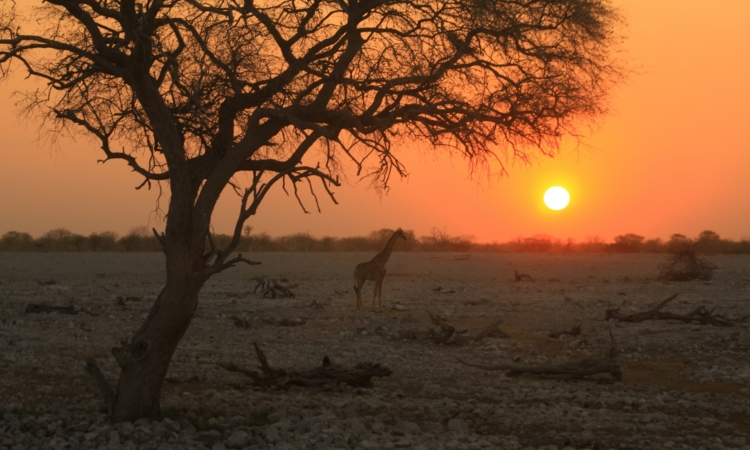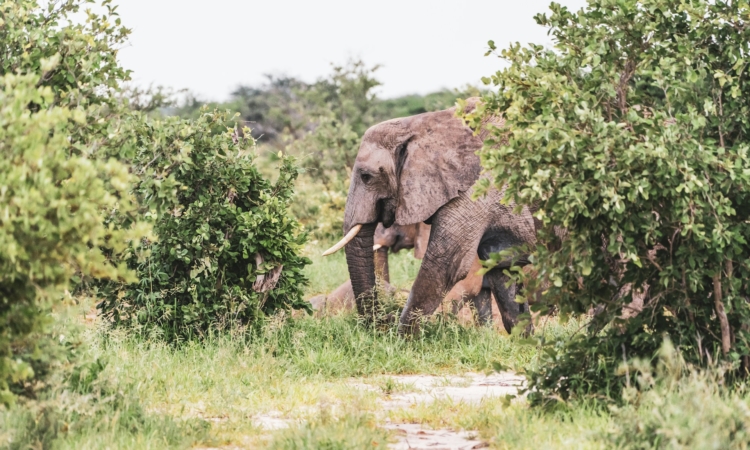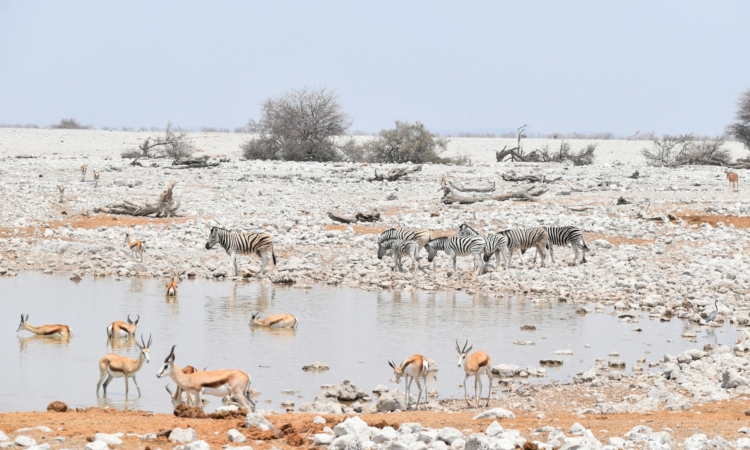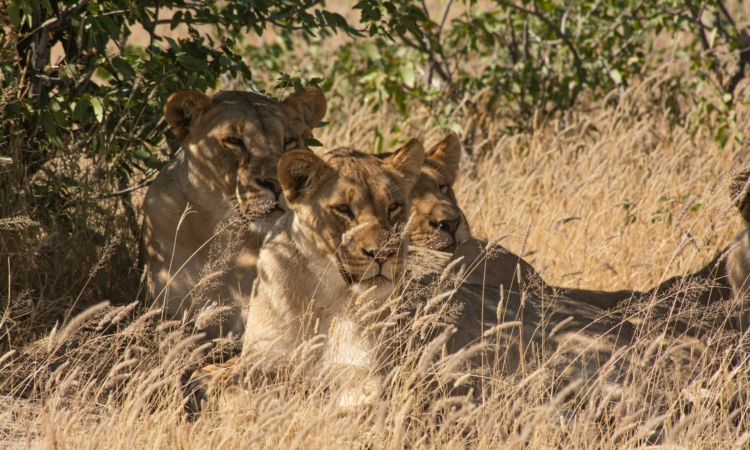This month falls in the middle of the rainy season, with about 80–120 mm of rain spread over 8–12 days. Showers are less frequent than in January and are more likely in the afternoon or evening. Rainfall is not the same across the park. Eastern Etosha often receives more rain, Western Etosha gets less, and Central Etosha receives a moderate amount.
Daytime temperatures are warm and humid, often reaching up to 35°C. Nights are cooler, around 17°C–21°C, with light breezes. Winds blow at about 10–20 km/h, mostly from the northeast, but may change when storms move in.
Vegetation is at its thickest in February. Trees, flowers, and grasses are in full growth, creating a green and fresh setting. Many animals have young at this time, especially springboks and zebras. Because food and water are easy to find, wildlife is spread out and not concentrated at the waterholes.
Rhinos and elephants are often seen enjoying muddy areas or near small ponds. This is also a good month for bird watchers, as many species are nesting or feeding. Colourful waterbirds can be seen in flooded areas, and quiet sunsets provide good chances for photography.
Travel during this month can be harder because some roads may be muddy or flooded. Visitors should carry spare tyres, a tow rope, and a jack in case of trouble. It is best to book accommodation before arriving, as heavy rain can make travel slower than expected.
Campers should avoid pitching tents in low areas where rainwater may collect. Wildlife is more scattered, so slow driving across grasslands will increase the chance of spotting animals.
Walking near bushes should be avoided, as snakes and insects such as scorpions and mosquitoes are more active during the rainy season. Using insect repellent and wearing closed shoes can help prevent bites and stings.
February offers a quiet safari experience, with beautiful green scenery and active birdlife. With careful planning and safety in mind, visitors can still enjoy the park’s wildlife and natural beauty during this wet but rewarding time of year.







